Using a RCBS micrometer to measure oal to ogive , I imprint a line using extra force onto a dummy round, this marks the oal to ogive reference. Then I take same dummy round and measure with a hornady comparator body in my calipers. Well the line I made with the mic is well above what the comparator shows. Has anyone else noticed this and might I add, if you make measurements with differing tools for one rifle, do not change measuring technique, you may get crossed up with the numbers. I did measure the inside diam of a hornady .257" bushing (comparator) and got .250". I'm guessing this is a safety measure or am I missing something?
You are using an out of date browser. It may not display this or other websites correctly.
You should upgrade or use an alternative browser.
You should upgrade or use an alternative browser.
RCBS mic and hornady comparator
- Thread starter lever-hed
- Start date
 Help Support Long Range Hunting Forum
Help Support Long Range Hunting Forum
boomtube
Well-Known Member
Easy answer for why there is a difference between the Mic and the Hornady tools; they use different diameters for a reference.
Now, is there any logic for why they don't both use the same diameter, that is the nominal bore diameter? Not that I know of. Maybe neither acually do, never checked. But I will tomorrow, the RCBS Mic anyway. I use a Sinclair "nut" bullet ogive tool instead of the Hornady, but I modified it to match my desires and I don't know what the original bore diameters were.
Now, is there any logic for why they don't both use the same diameter, that is the nominal bore diameter? Not that I know of. Maybe neither acually do, never checked. But I will tomorrow, the RCBS Mic anyway. I use a Sinclair "nut" bullet ogive tool instead of the Hornady, but I modified it to match my desires and I don't know what the original bore diameters were.
Last edited:
woods
Well-Known Member
One thing you need to look for is that there is a built in error in the Hornady tool because of the size of the modified case. The modified case is inserted into the chamber until the shoulder comes in contact with the shoulder of chamber. At that time, the case head will not be at the same location as a loaded case that is held against the chamber shoulder (if you PFLR or neck size) by the bolt head. Essentially the headspace measurement or the shoulder gap in a belted case.
I have 3 ways to measure distance to the lands; the Hornady, the Sinclair and a tool I call the Reeves tool, shown here with the Hornady
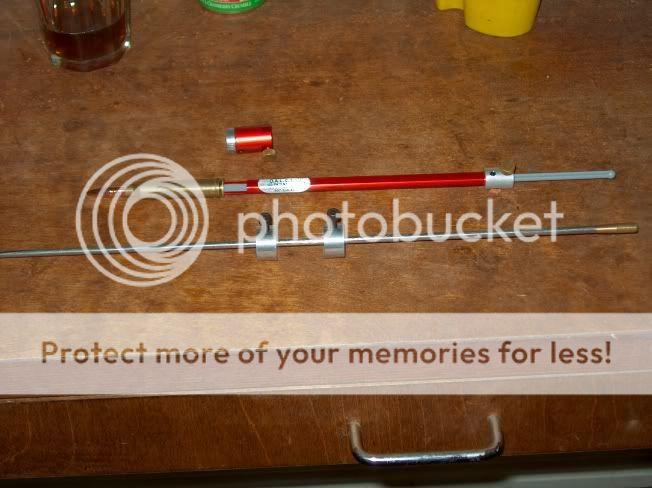
Essentially it is a commercially manufactured stainless rod with 2 locking collets, you insert it in the muzzle to the bolt face and lock the rear collet
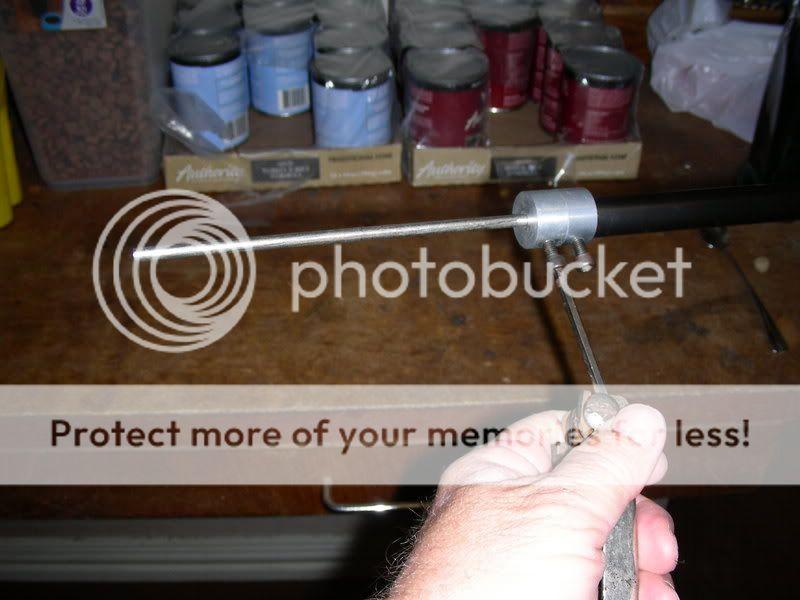
Insert your bullet to the lands with the Hornady tool and insert the rod to the bullet tip and lock the front collet
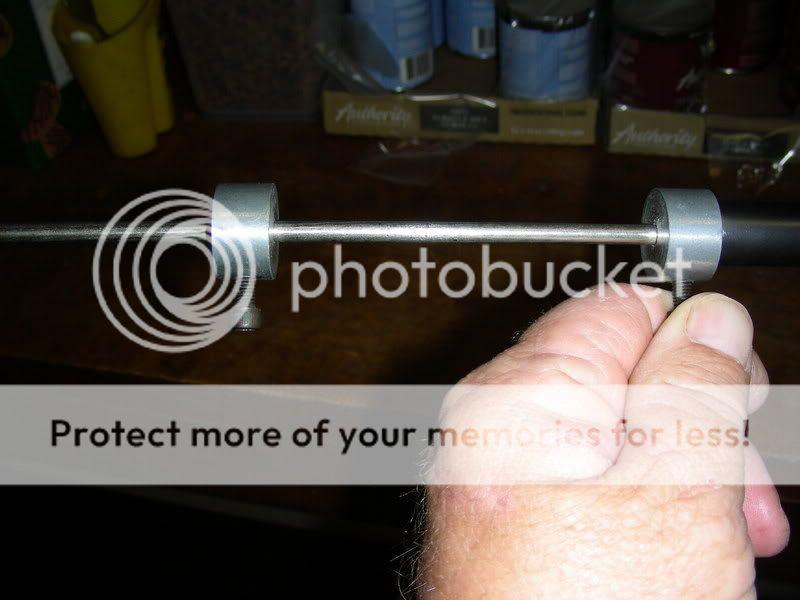
and measure between the collets
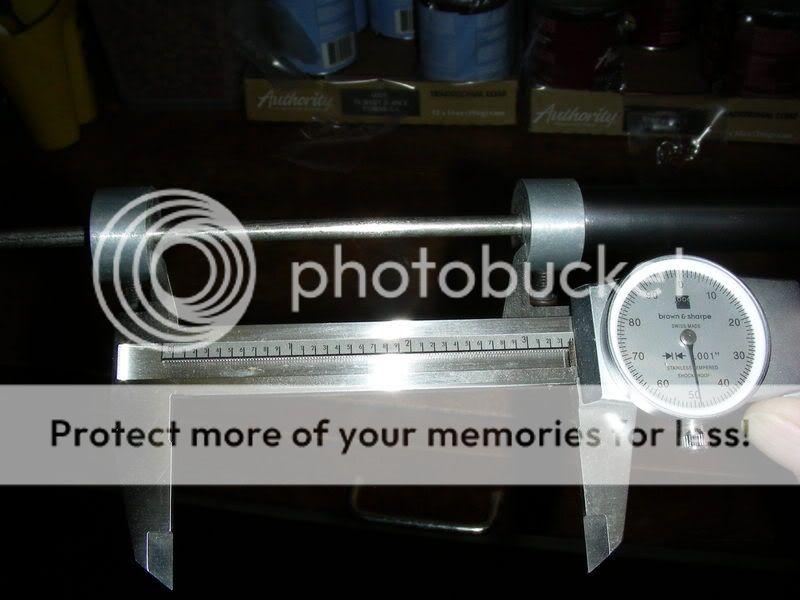
no built in error and fool proof (which helps me out).
Then use that same bullet to seat in the first load and measure with the comparator to the ogive for seating the rest. The only variable is how much pressure used to seat the bullet against the lands.
I have 3 ways to measure distance to the lands; the Hornady, the Sinclair and a tool I call the Reeves tool, shown here with the Hornady

Essentially it is a commercially manufactured stainless rod with 2 locking collets, you insert it in the muzzle to the bolt face and lock the rear collet

Insert your bullet to the lands with the Hornady tool and insert the rod to the bullet tip and lock the front collet

and measure between the collets

no built in error and fool proof (which helps me out).
Then use that same bullet to seat in the first load and measure with the comparator to the ogive for seating the rest. The only variable is how much pressure used to seat the bullet against the lands.
boomtube
Well-Known Member
"I have ... a tool I call the Reeves tool,..."
Woods, good photos. Your Reeves tool does exactly what my dowels do, I'm just not as mechanized (with collars) as you! I have considered turning a couple of those locking collars to use on my dowels have been to lazy so far. Maybe I'll fire up the old lathe sometime this winter and do it. Anyway, Sinclair has a tool quite simular to yours for sell.
I do think that's the best way to go for total simplicity and great accuracy too. I too load a dummy with that specific bullet to work with later.
Woods, good photos. Your Reeves tool does exactly what my dowels do, I'm just not as mechanized (with collars) as you! I have considered turning a couple of those locking collars to use on my dowels have been to lazy so far. Maybe I'll fire up the old lathe sometime this winter and do it. Anyway, Sinclair has a tool quite simular to yours for sell.
I do think that's the best way to go for total simplicity and great accuracy too. I too load a dummy with that specific bullet to work with later.
Last edited:
woods
Well-Known Member
Best $25.00 I ever spent!
Kevin Cram
Well-Known Member
lever-hed,
I would reccomend sticking with just one measuring instrument. I use the ex Stoney Point now Hornady comparator and make my own insert to be .001" less than caliber (ie: .308 cal. is bored out to .307") Each company may have a different bored diameter which stops at different diameters on the bullets nose taper. As long as you stick with one you should get repeatable results.
Woods,
Your "Reeves Tool" looks very similiar to the Sinclair Tool. I use the Sinclair and get very conistent readings. I insert a bullet into the chamber and slide it up into the throat with the rod. I lock the collar up against fo bolt. Poke the bullet out with a cleaning rod from the muzzle end. Next I insert a fired case but unprimed into the chamber. (make sure the primer is flush with the base of the case and the primer isn't cratered) Slide the other collar up against the fo bolt and lock that fast. Remove the case. Measure the bullets base to ogive using the ex Stoney Point now Hornady comparator and record that number. Now measure the distance between the collars and record that number. Add the two up and you have a base of case to ogive meaurement to the lands. I've been using this method for the past 10+ years and has worked very well for me. I use Reddings Competition Seater but I made my own bullet seating stem to seat on the .307" diameter and Sierra Match Kings and Hornady A-max bullets and get consistent base of case to ogive measurements usually dead on or less than .001" variance. I also segregate my bullets in .001" lots from base to ogive before hand. This helps to cull out any oddballs when seating.
I would reccomend sticking with just one measuring instrument. I use the ex Stoney Point now Hornady comparator and make my own insert to be .001" less than caliber (ie: .308 cal. is bored out to .307") Each company may have a different bored diameter which stops at different diameters on the bullets nose taper. As long as you stick with one you should get repeatable results.
Woods,
Your "Reeves Tool" looks very similiar to the Sinclair Tool. I use the Sinclair and get very conistent readings. I insert a bullet into the chamber and slide it up into the throat with the rod. I lock the collar up against fo bolt. Poke the bullet out with a cleaning rod from the muzzle end. Next I insert a fired case but unprimed into the chamber. (make sure the primer is flush with the base of the case and the primer isn't cratered) Slide the other collar up against the fo bolt and lock that fast. Remove the case. Measure the bullets base to ogive using the ex Stoney Point now Hornady comparator and record that number. Now measure the distance between the collars and record that number. Add the two up and you have a base of case to ogive meaurement to the lands. I've been using this method for the past 10+ years and has worked very well for me. I use Reddings Competition Seater but I made my own bullet seating stem to seat on the .307" diameter and Sierra Match Kings and Hornady A-max bullets and get consistent base of case to ogive measurements usually dead on or less than .001" variance. I also segregate my bullets in .001" lots from base to ogive before hand. This helps to cull out any oddballs when seating.
woods
Well-Known Member
The Sinclair
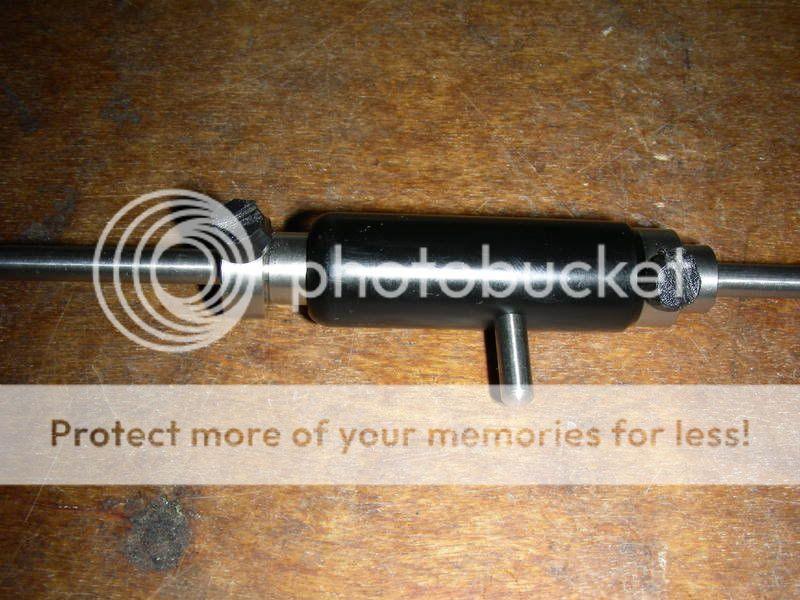
is in the drawer. It will work if it will fit your rifle. I haven't used it in 3 or 4 years but operating from memory there were 2 problems; it would not fit every gun because you have to insert it from the tang area and rifles are built different and the little locking knurl nuts were hard to get locked down enough to hold them in place. In the photo notice that I made a flat head groove for a screwdriver tip to put more pressure on the locking threaded shaft. I think they have a new improved version but since I have the Reeves tool no other method is necessary.

is in the drawer. It will work if it will fit your rifle. I haven't used it in 3 or 4 years but operating from memory there were 2 problems; it would not fit every gun because you have to insert it from the tang area and rifles are built different and the little locking knurl nuts were hard to get locked down enough to hold them in place. In the photo notice that I made a flat head groove for a screwdriver tip to put more pressure on the locking threaded shaft. I think they have a new improved version but since I have the Reeves tool no other method is necessary.
Kevin,
thanks. I will do that. I use the RCBS mic and it works for me. I've not much experience with anything else but this tool works fine for me.
I applied a reasonably consistent tension on the screw that applies pressure to the collapsable tool and have been able to get consistent results after 5 tries, using it inconjunciton with the hornady comparator tool for the calipers. The way I see it, any way you do it, its a touchy-feely kind of thing..
Woods, thanks for the pics. I never quite understood how to implement that method . seems like it works good for you.. again thanks all this insight is very helpful.. happy hunting.
thanks. I will do that. I use the RCBS mic and it works for me. I've not much experience with anything else but this tool works fine for me.
I applied a reasonably consistent tension on the screw that applies pressure to the collapsable tool and have been able to get consistent results after 5 tries, using it inconjunciton with the hornady comparator tool for the calipers. The way I see it, any way you do it, its a touchy-feely kind of thing..
Woods, thanks for the pics. I never quite understood how to implement that method . seems like it works good for you.. again thanks all this insight is very helpful.. happy hunting.